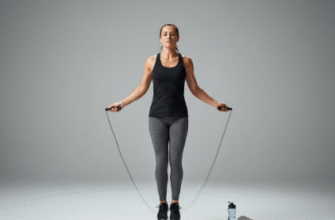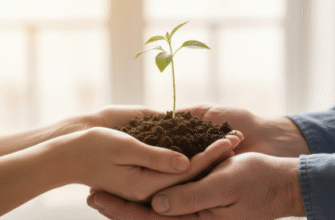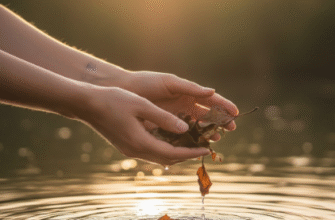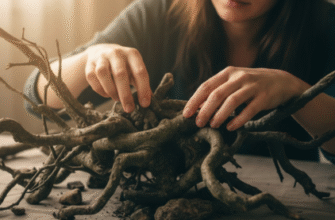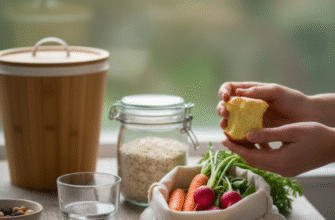Plunging your hands into cool, damp earth isn’t just about planting seeds; it’s an invitation back into your own skin. We often think of our bodies in terms of scheduled workouts or, conversely, aches and pains. But the garden offers a different kind of physical dialogue, one that’s subtle, consistent, and deeply grounding. It’s less about reps and sets and more about rediscovering the simple mechanics and sensations of being embodied.
Consider the act of weeding. It might seem tedious, yet it demands a surprising range of motion. There’s the squat or kneel, the gentle pull, the twist of the torso, the focused grip. You engage core muscles for stability, shoulder and arm muscles for leverage, and leg muscles for support. It’s not a high-intensity burn, but rather a sustained, low-impact movement that awakens dormant connections between mind and muscle. You start to notice the subtle shifts in balance, the tension in your forearms, the stretch in your back – sensations often drowned out by the noise of daily life.
Beyond the Obvious Effort
It’s easy to focus on the bigger movements – digging holes, turning compost, hauling bags of mulch. These certainly provide a workout. But the real magic lies in the smaller, often overlooked actions. The delicate pinch required to deadhead a flower, the careful maneuvering around fragile seedlings, the steady hand needed to water without washing away soil. These actions cultivate a refined motor control and a heightened awareness of how your body interacts with the delicate environment around it.
You learn to differentiate between the resistance of a stubborn root and the give of loose soil purely through touch. Your fingers become sensors, reading the texture of leaves, the moisture level of the earth, the unwelcome prickle of a thistle long before your eyes confirm it. This tactile exploration is a powerful way to reconnect with the physical world and, by extension, your own physical self. It’s a direct counterpoint to the often disembodied experience of staring at screens or being lost in thought.
The Rhythm of Movement
Gardening tasks often fall into natural rhythms. The repetitive arc of a hoe, the back-and-forth sweep of a rake, the steady pace of planting bulbs one after another. Engaging in these rhythms can be almost meditative. Unlike structured exercise where the focus might be on pushing limits, gardening encourages a more intuitive flow. You find a pace that feels sustainable, a movement pattern that feels right for the task and for your body at that moment.
This rhythmic engagement can quiet the mind. The focus shifts from abstract worries to the concrete reality of the task at hand: the feel of the tool in your grip, the sight of transforming earth, the sound of birdsong. Your breath might naturally deepen and sync with your movements. This isn’t forced mindfulness; it arises organically from the interaction between your body, the tools, and the garden itself.
Sensory Immersion and Body Signals
The garden is a feast for the senses, and engaging them fully enhances body awareness. It’s not just touch, but also the smell of damp soil after rain, the scent of crushed tomato leaves, the fragrance of blooming flowers. These scents can trigger memories and emotions, but they also simply anchor you in the present moment, experienced through your physical being.
Sound plays a role too. The buzz of bees, the rustle of leaves, the satisfying thud of a trowel hitting the earth – these sounds create an auditory landscape that contrasts sharply with indoor environments. Paying attention to these external sounds can paradoxically make you more aware of your internal state – your breathing, your heartbeat, the subtle creaks and groans of your own movement.
Pay attention to the signals your body sends while gardening. It’s easy to get engrossed and overdo it, especially with repetitive motions. Vary your tasks frequently to avoid straining specific muscle groups. Remember to stretch beforehand and take regular breaks, particularly on hot days. Gardening should nurture your connection to your body, not lead to injury.
Learning Your Limits and Strengths
Through gardening, you gain a practical understanding of your physical capabilities. You learn how much weight you can comfortably lift, how long you can kneel before your knees complain, which movements feel fluid and which feel restricted. This isn’t about judgment; it’s about information. It’s your body communicating its current state.
Perhaps you discover a surprising strength in your grip, or notice that your balance improves as you navigate uneven ground. Maybe you realize the need to build more core strength to support your back during digging. This ongoing feedback loop allows you to adapt, to modify tasks, perhaps even inspiring you to incorporate specific stretches or strengthening exercises into your routine, not because you *should*, but because your gardening experience has shown you the benefit.
The Grounding Effect
There’s something undeniably grounding about having direct contact with the earth. Whether it’s the feeling of soil under your fingernails or the simple act of standing firmly on the ground as you work, gardening provides a tangible connection to the planet. This physical contact can feel centering, pulling your awareness away from swirling thoughts and into the solidity of your own body and its place in the physical world.
This isn’t necessarily about esoteric energy flows; it’s about the simple, powerful sensation of physical presence. Feeling the texture of the ground beneath your feet (even through shoes), the pull of gravity, the support of the earth – it reinforces your sense of being here, now, in this body. It’s a fundamental, often forgotten, aspect of our existence that the garden readily provides.
From Effort to Nourishment
The connection culminates beautifully when it comes time to harvest. The vegetables you pick, the herbs you snip, the fruit you gather – these are the direct results of your physical effort. Lifting a heavy squash, carefully plucking ripe tomatoes, digging up potatoes – these actions link your bodily work directly to sustenance.
Preparing and eating food you’ve grown yourself completes the cycle. You appreciate the texture, the flavour, the freshness in a way that’s often missing with store-bought produce. There’s a profound satisfaction in knowing your body helped bring this nourishment into being. It fosters a deeper respect for the food, for the process, and for the physical self that participated in it.
Ultimately, gardening offers a gentle, persistent reminder that we are physical beings. It encourages movement, cultivates sensory awareness, and provides tangible rewards for our efforts. It’s a way to step outside the often-abstract nature of modern life and reconnect with the fundamental reality of our bodies interacting with the living world. It’s not just about growing plants; it’s about cultivating a richer relationship with yourself.


